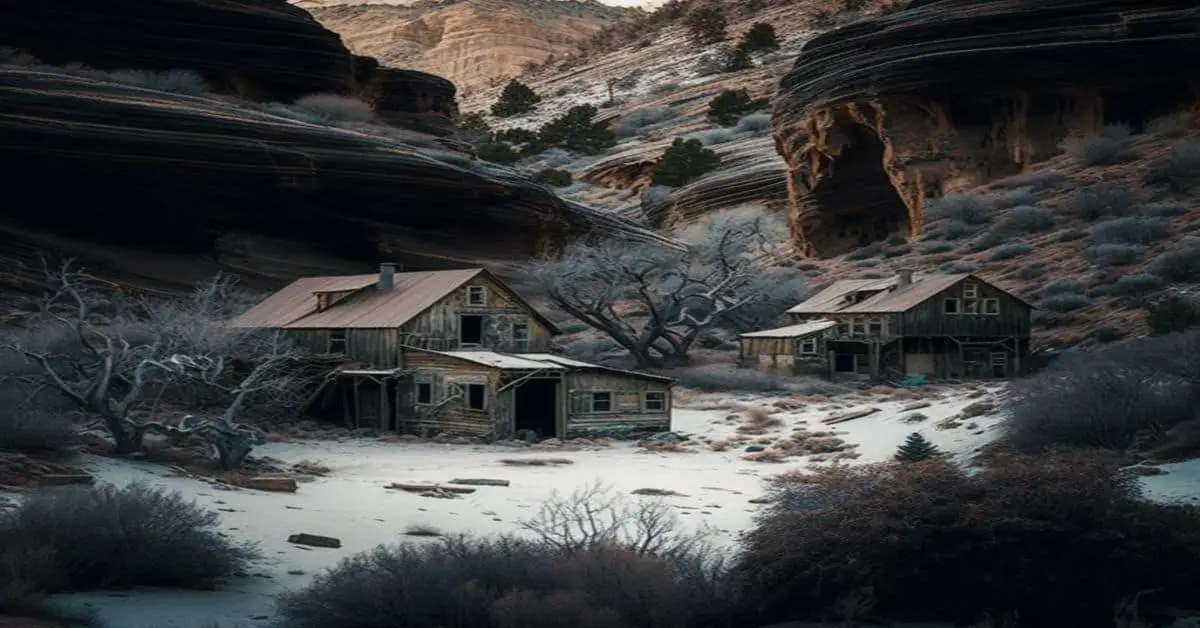The history of California is dotted with numerous ghost towns that have been lost to time, leaving behind only the remnants of their past glory. Among these, the towns of Lexington and Alma hold a special place, as they were once thriving rail stops for the logging industry and vacationers. These towns were home to stage stops, hotels, saloons, small agricultural operations, general merchandise stores, and lumber mills, making them important centers of commerce and industry during their heyday.
Sadly, the towns of Lexington and Alma were submerged beneath the Lexington Reservoir in 1950 due to the construction of the James J. Lenihan dam. Today, they exist only in memories and foundational structures visible when water levels drop.
Nevertheless, these towns’ stories continue to fascinate many, as they offer a glimpse into California’s rich history, the challenges of modernization, and the impact of human activities on the environment. This article explores the history and significance of these lost ghost towns, their submergence and the reservoir’s creation, and the remnants that remain today as a testament to their past glory.
Key Takeaways
- Lexington and Alma were once thriving towns that were submerged beneath the Lexington Reservoir in 1950 due to the construction of the James J. Lenihan dam.
- The towns were strategically located near the forests, and the railroad easily transported logs to the mills. They also attracted many vacationers who came to enjoy the scenic beauty of the area and the various recreational activities available.
- The submergence of these towns had a significant impact on the area’s ecology. Still, remnants of the two towns are occasionally visible when water levels drop, providing a glimpse into the past.
- Efforts to preserve the history and ecology of the area have been made, including the creation of the Lexington Reservoir Visitor Center, which offers opportunities for outdoor recreational activities such as boating, fishing, and hiking.
History and Significance
The submerged ghost towns of Lexington and Alma in California were once bustling rail stops that played a significant role in the state’s history.
These towns were important to the logging industry, as they served as a hub for the transportation of logs, and they also attracted many tourists with their stage stops, hotels, saloons, small agricultural operations, general merchandise stores, and lumber mills.
The logging industry was crucial to California’s economic growth in the late 1800s, and Lexington and Alma were at the forefront of this industry.
The towns were strategically located near the forests, and the railroad made transporting logs to the mills easy.
In addition to the logging industry, the towns attracted many vacationers who came to enjoy the scenic beauty of the area and the various recreational activities available.
Today, the submerged towns serve as a reminder of California’s rich history and the importance of the logging industry and tourism in the development of the state.
Submergence and Reservoir
Submerged beneath the still waters of the Lexington Reservoir lies a submerged world of forgotten history, where the remnants of two once-thriving communities are now hidden from view.
The construction of the James J. Lenihan dam in 1950 resulted in the submergence of the towns of Lexington and Alma, which were important rail stops for the logging industry and vacationers. The submergence of these towns had a significant impact on the ecology of the area. The reservoir, which covers an area of 914 acres, has become a vital source of drinking water for the region. However, it has also disrupted the natural ecosystem, resulting in habitat loss for many species of fish and birds.
Despite the ecological impact, the Lexington Reservoir has the potential to be a tourist attraction. The remnants of the two towns are occasionally visible when water levels drop, providing a glimpse into the past. The most intact remnant of Alma is the 1920s bridge, which is a popular spot for visitors to take photographs.
Additionally, the area offers opportunities for outdoor recreational activities such as boating, fishing, and hiking. The construction of the Lexington Dam and Reservoir may have erased the physical presence of the two towns, but their memory lives on in the stories of the few people who remember them and in the potential for tourism in the area.
Remnants and Modern-day Impact
Remnants of the two former communities can still be observed when water levels recede, providing insight into the impact of the construction of the James J. Lenihan dam and the creation of the Lexington Reservoir on local history and ecology.
The visible structures include the Alma Bridge, the Alma Store’s concrete foundation, and the Lexington Hotel’s ruins.
These remnants serve as a reminder of the rich history of the area, and attract visitors who are interested in exploring the past.
However, the submerged ghost towns also impact tourism, as the loss of historical landmarks has decreased the area’s appeal to some visitors.
In recent years, there have been efforts to preserve the history and ecology of the area.
The Santa Clara Valley Water District has partnered with local historical societies and environmental groups to create the Lexington Reservoir Visitor Center.
The center offers exhibits and educational programs about the area’s history and the reservoir’s impact on the local ecosystem.
Additionally, the center provides opportunities for visitors to explore the remnants of the ghost towns and learn about the logging industry and the early days of tourism in the region.
Through these preservation efforts, the legacy of Lexington and Alma lives on, and visitors can gain a deeper understanding of the impact of human activity on the environment and local communities.
Frequently Asked Questions
What types of businesses were located in Lexington and Alma besides logging and agriculture?
Asides logging and agriculture, Lexington and Alma had stage stops, hotels, saloons, wineries, small agricultural operations, general merchandise stores, and lumber mills. These businesses were impacted by natural disasters, including floods and fires that were common in the area.
Were there any notable events or individuals associated with the towns?
Notable figures associated with Lexington and Alma include hotelier William H. Weeks and lumber mill owner S.R. Kennedy. These towns played a significant role in California’s logging industry and were popular vacation spots, contributing to their historical significance.
How did the logging industry in the area contribute to the development of the towns?
The logging industry in the area contributed significantly to the development of Lexington and Alma, providing employment opportunities and boosting local economies. It had a historical significance in shaping the towns, with lumber mills among the major industries that thrived in the area.
What was the process for relocating residents and businesses before the dam was constructed?
Relocation logistics for residents and businesses before the construction of James J. Lenihan dam, which submerged Lexington and Alma, resulted in community impact. The process involved acquiring land, compensating owners, and relocating structures, with some businesses choosing not to relocate.
Are there any plans or proposals to uncover and preserve more of the remnants of the towns for historical purposes?
Exploring ruins of submerged towns for historical purposes requires community involvement and funding. While no current plans or proposals exist, preservation efforts could be initiated with proper resources and support.


